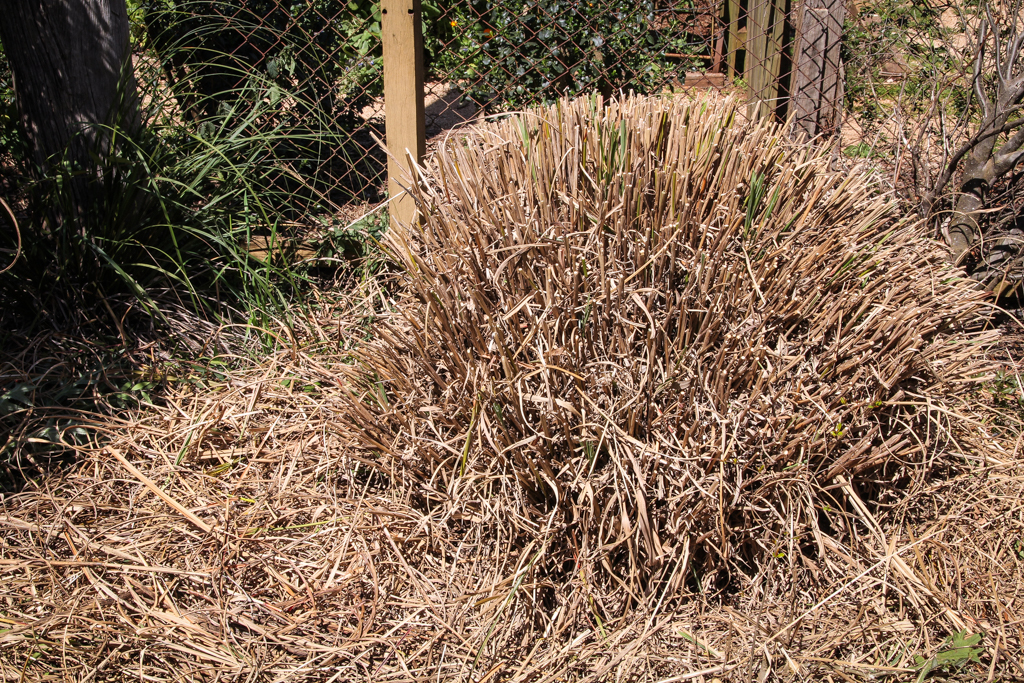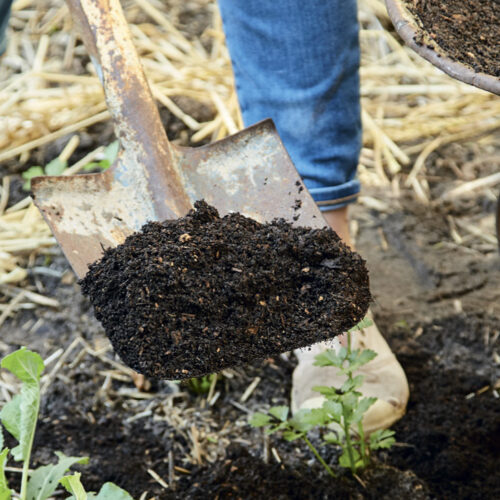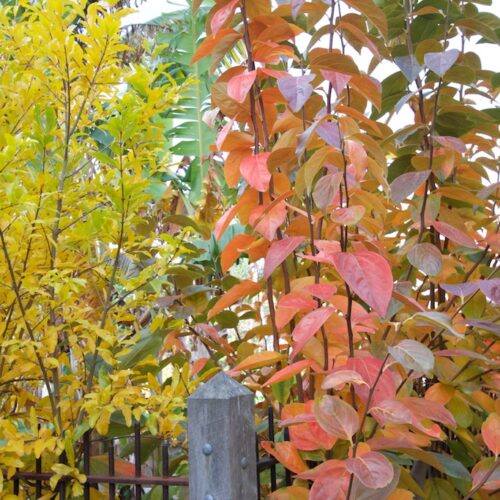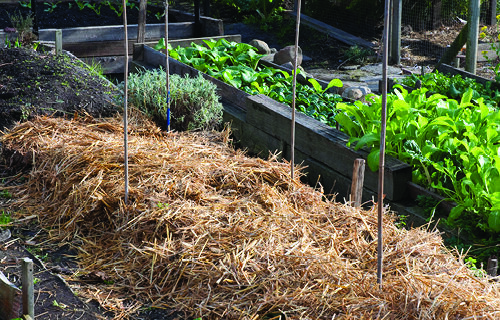Grow your own mulch
2015-09-10T02:02:19+10:00
With an El Nino threatening a dry spring, mulching may prove vital, writes JUSTIN RUSSELL.
September is the driest month of the year in my part of south east Queensland, and with an El Nino now established, this spring looks set to be drier than usual. In the absence of decent winter rain I’ve started soaking some of my garden beds with stored rainwater in preparation for a layer of mulch.
Gardening writers like to bang on about mulch. For good reason. The benefits are many, but the one that has seen my garden through many a dry spell is the fact that mulch prevents moisture evaporating from the soil. A layer of leafy material spread over a garden bed gives you more bang for your hydration buck, so to speak, keeping the ground moist and ensuring all the helpful critters that live in the soil can flourish. Dry soil is lifeless.
My material of choice has always been chopped and baled sugarcane. I figure that it’s reasonably local (I live just a few hours from cane growing country), it’s certified organic, and it makes use of a resource that would otherwise go to waste. But on the downside, it’s not all that cheap to buy and cane farms are not without issues, the most glaring being run off into rivers that flow into sensitive marine systems.
To help reduce my use of sugarcane, I make some of my own mulch. Once upon a time it was via a petrol powered shredder that turned prunings into wood chips. That was a dirty, noisy, time consuming pain in the you know what. These days, I simply grow ornamental grasses. They don’t smell. They’re quiet. They’re stunningly beautiful. And the mulch they produce is free and immediately local.
Scattered around my garden are various forms of Miscanthus, a genus of deciduous, flowering grasses from Japan and China that perform well in a broad range of climates and weather conditions. The miscanthus in my garden have survived very wet and very dry years without any assistance. They suit semi-arid, subtropical and temperate climates. Best of all, they need an annual haircut in late winter.
By pruning off the old growth, which in frosty areas turns the colour of straw, fresh green leaves can easily burst into growth from the perennial crown. I simply cut off the old growth with a pair of hedge shears. It makes for a pleasant job, but if time’s short, I’ve heard of some people using a cordless hedge trimmer or even a chainsaw. Once the old foliage is cut, simply let it drop on surrounding garden beds or bundle it up into a wheelbarrow and transfer it to a different bed. An established grass such as Micanthus ‘Gracillimus’ (my favourite) will produce enough mulch to cover about 4 or 5 square metres of soil. Larger varieties such as Miscanthus x giganteus, which grows up to 4m tall, will cover double that area, and for nothing more than a small investment of time and energy!
One word of caution: Miscanthus can be weedy in some areas. If in doubt, either plant a sterile hybrid, cut the flower heads off before they mature, or choose an alternative species. Lemongrass, native poa, and even grains such as wheat and rice can be grown for mulch. For advanced mulchers, why not upscale. Grow a grass hedge or plant an mini-paddock. The idea of “home grown” isn’t just about food, after all.






